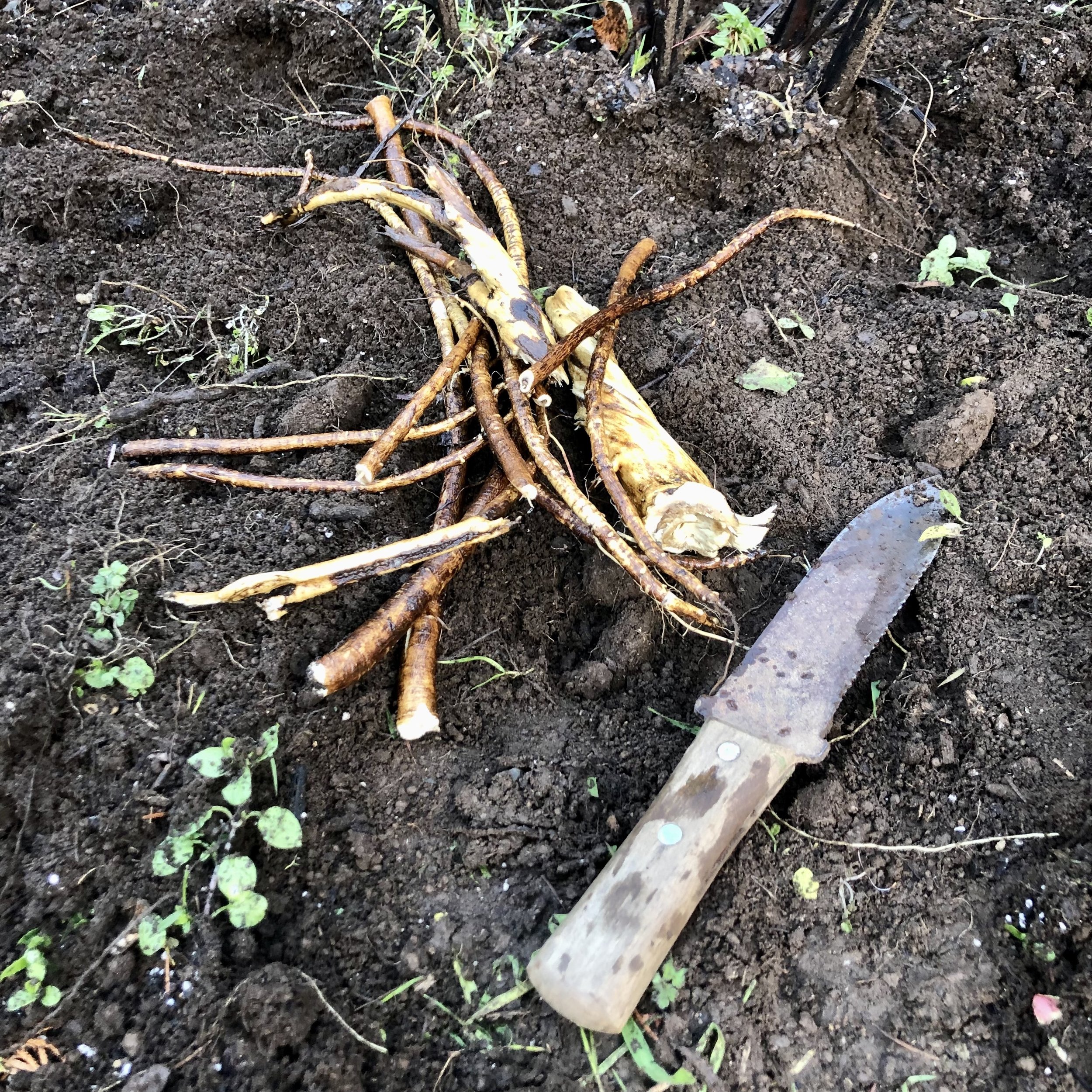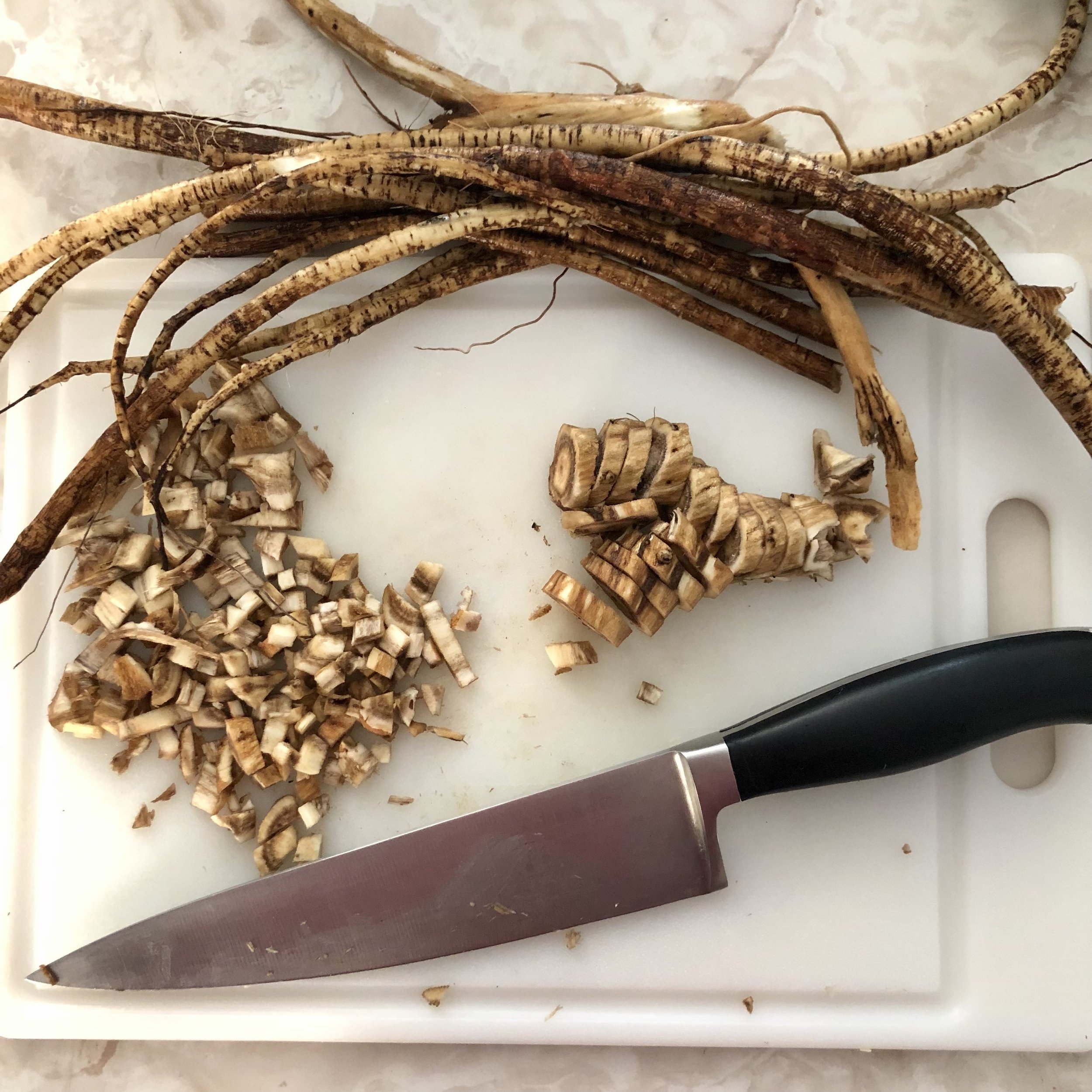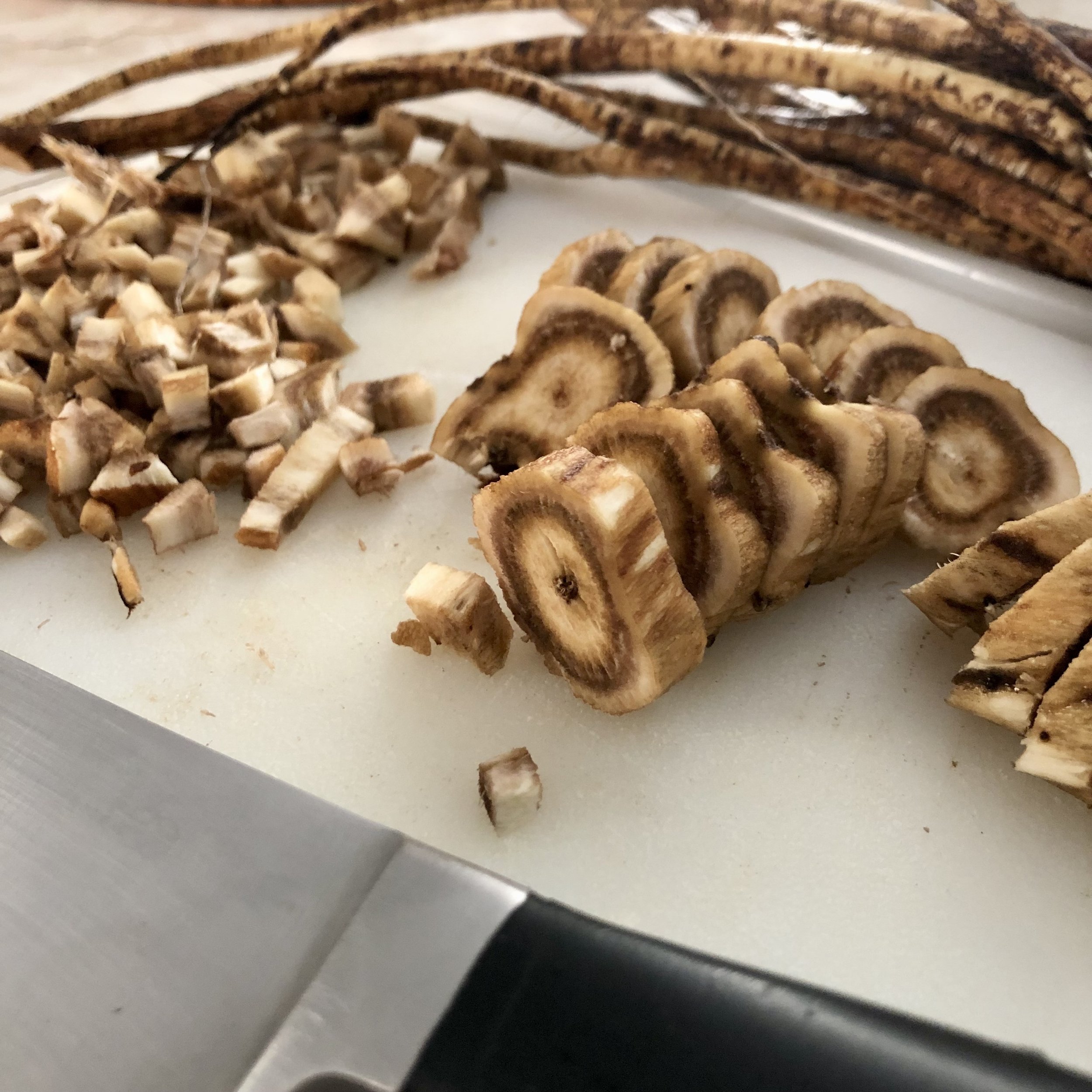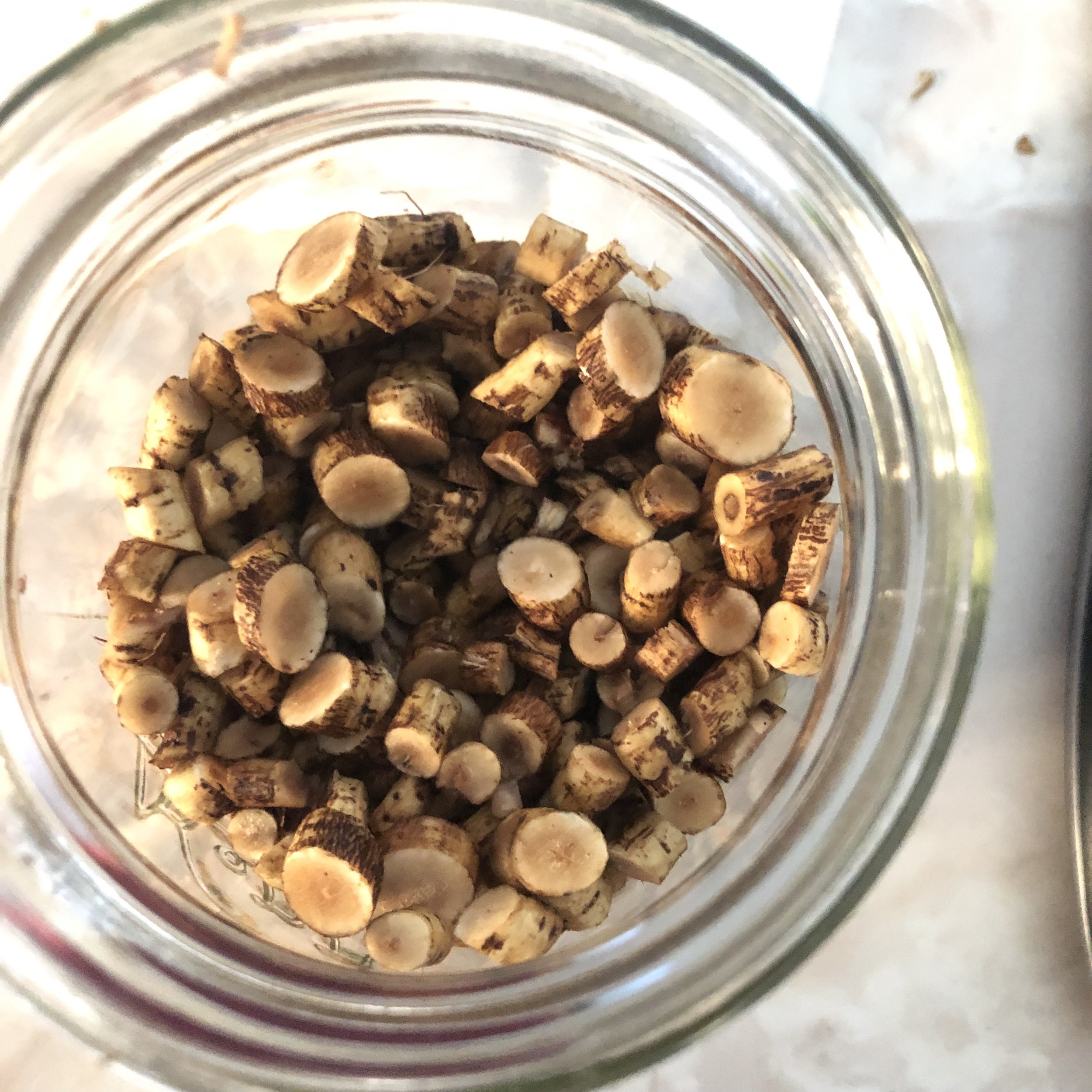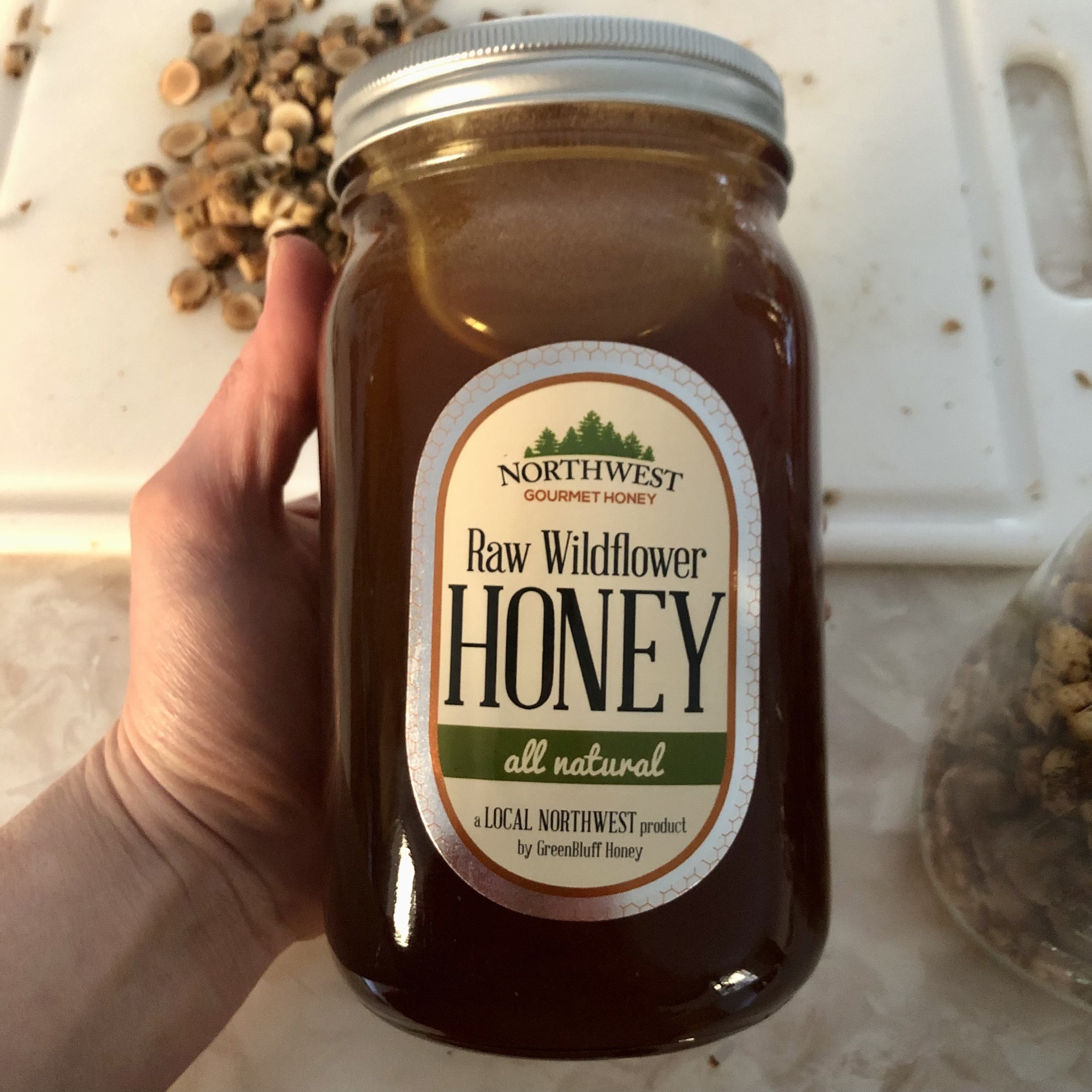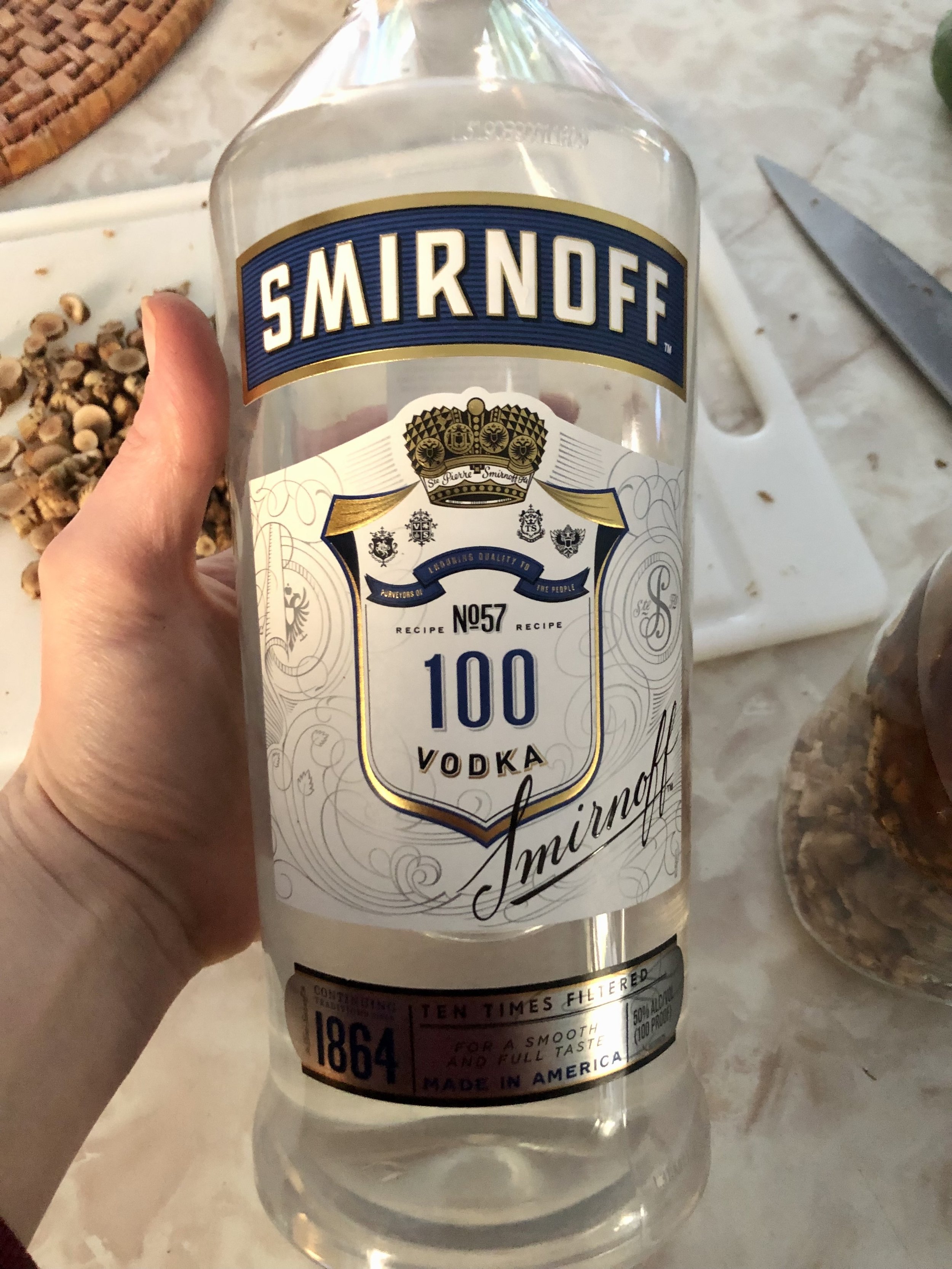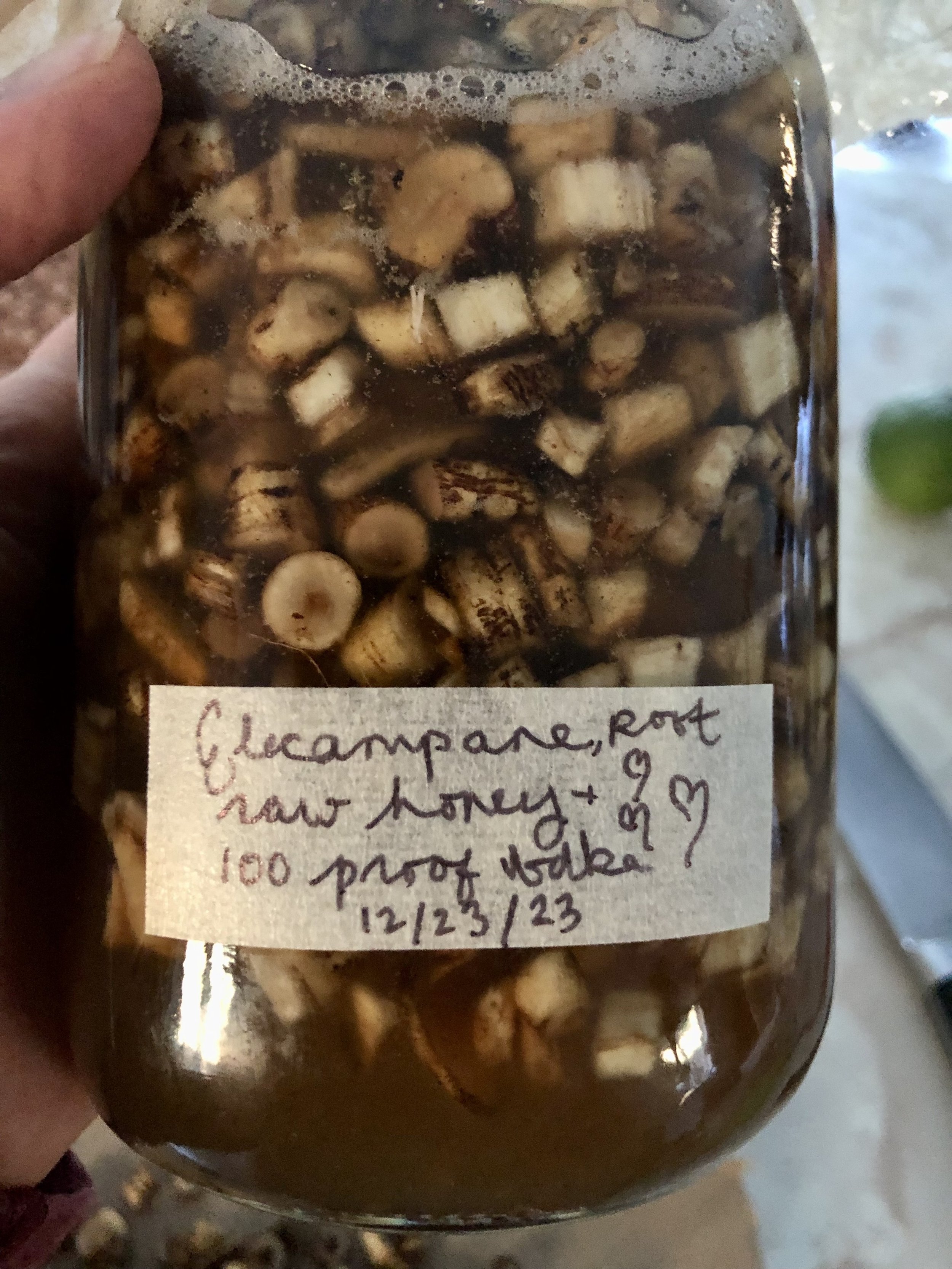Elecampane is a plant that's near and dear to my heart. Its brilliant yellow blossoms, large lung shaped leaves and strong presence in the garden makes it one of my favorite medicinal plants to grow.
The most potent medicinal qualities of Elecampane are found in its roots. Bitter, slightly sweet and aromatic, these roots help stimulate movement of cold, damp and stagnant conditions and offer warming support to the respiratory and digestive systems. I often brewed the dried roots into tea for our beloved cat Carl to help soothe his chronic upper respiratory issues.
The roots are also rich with inulin, a prebiotic fiber that feeds the healthy bacteria in the digestive tract, improving digestion and the entire gut biome. Elecampane root may also help one release struck sadness that lingers and has settled in the lungs and belly.
If the above description perks your interest you may want to consider making yourself a tincture with this wonderful root. The following recipe calls for fresh roots but dried roots can be used as well.
Supplies Needed
Fresh Elecampane root, preferably harvested in late fall/early winter
100 proof vodka
Raw honey
Glass jar w/ lid
Sharp chef's knife
Cutting board
Spoon or stir stick
Parchment paper
Permanent marker
Label
Cheesecloth
Fine mesh strainer
Harvest, scrub and clean the Elecampane roots very well and roughly chop into medium-small sized pieces. Fill the jar ¾ full with chopped roots (½ full if using dried roots), add 1/2-3/4 cup raw honey and allow it to flow between the root pieces. Fill the jar half full with vodka, stir to dissolve the honey and fill the jar almost to the top with vodka. Place a piece of parchment paper over the jar, screw the lid on tightly and shake very well to make sure the honey is fully dissolved. Label the jar with the contents and date, place in a cool dark place, shake well every few days and allow to steep for 6 weeks.
At the end of 6 weeks, strain the contents of the jar through a fine mesh strainer lined with cheesecloth into a glass measuring cup. Pour the strained tincture into a clean amber bottle, label and store in a cool dark place where it will keep for many years. When the tincture settles, there will be a milky white layer at the bottom of the jar, that’s the inulin. Shake your tincture well before each use and enjoy!


